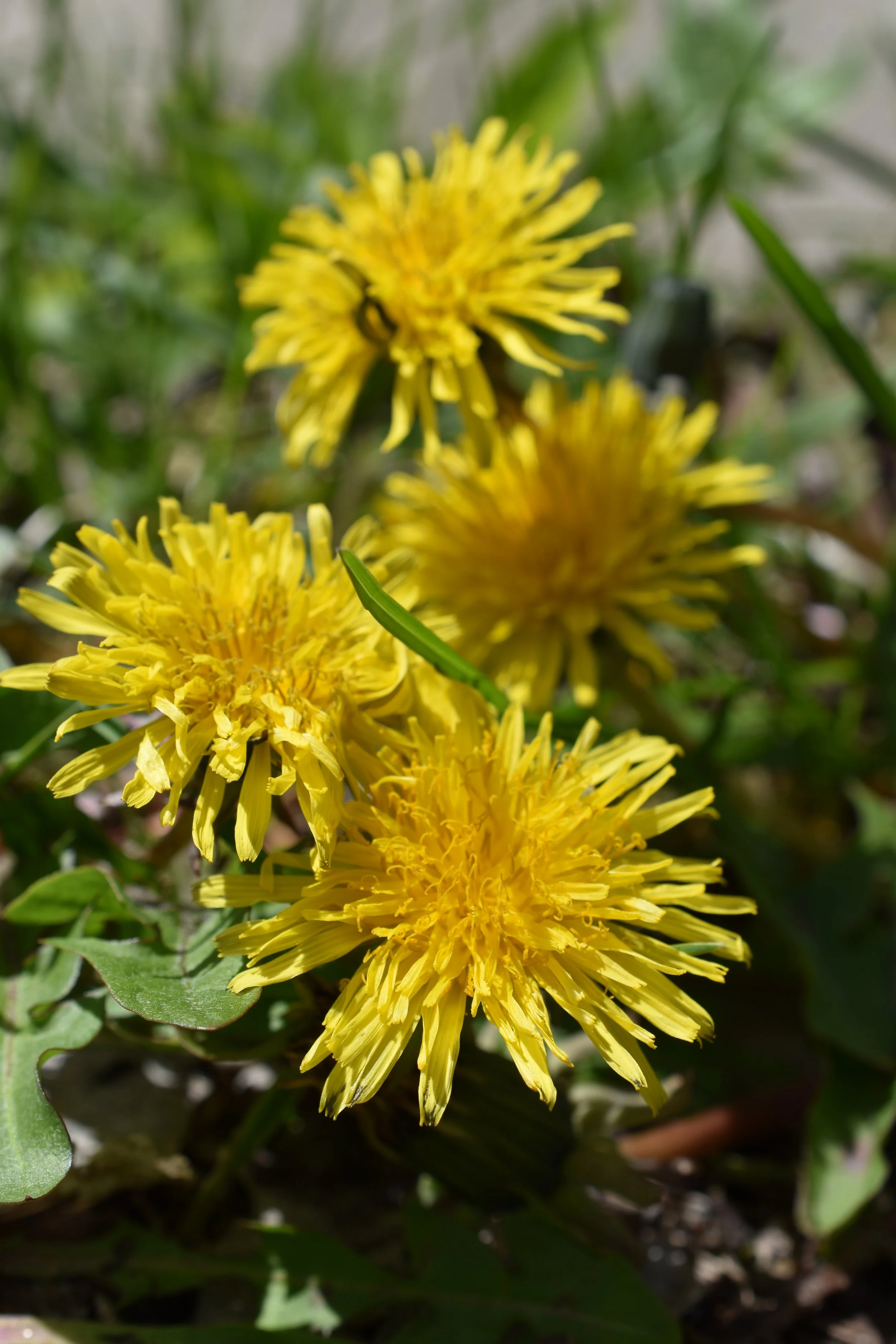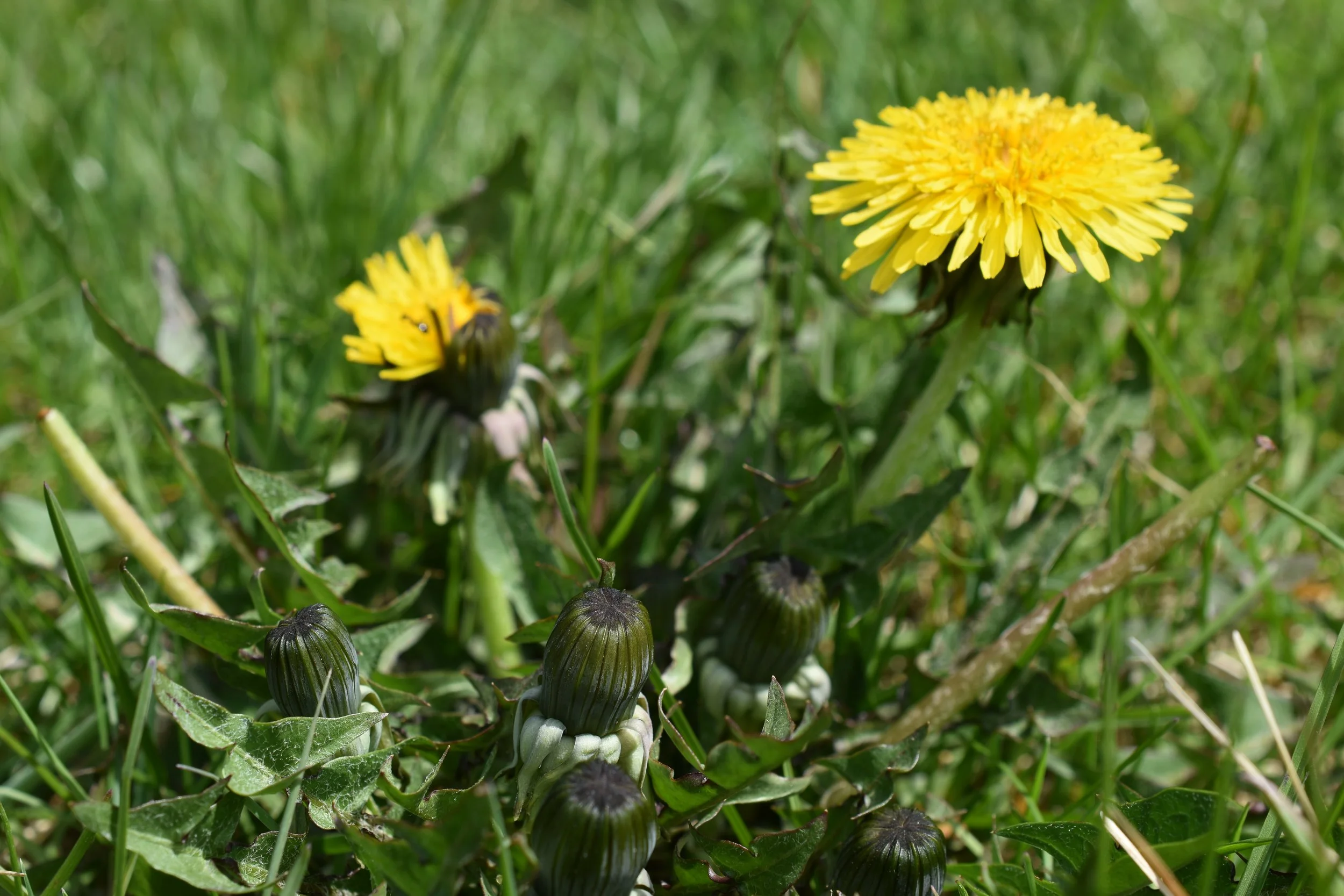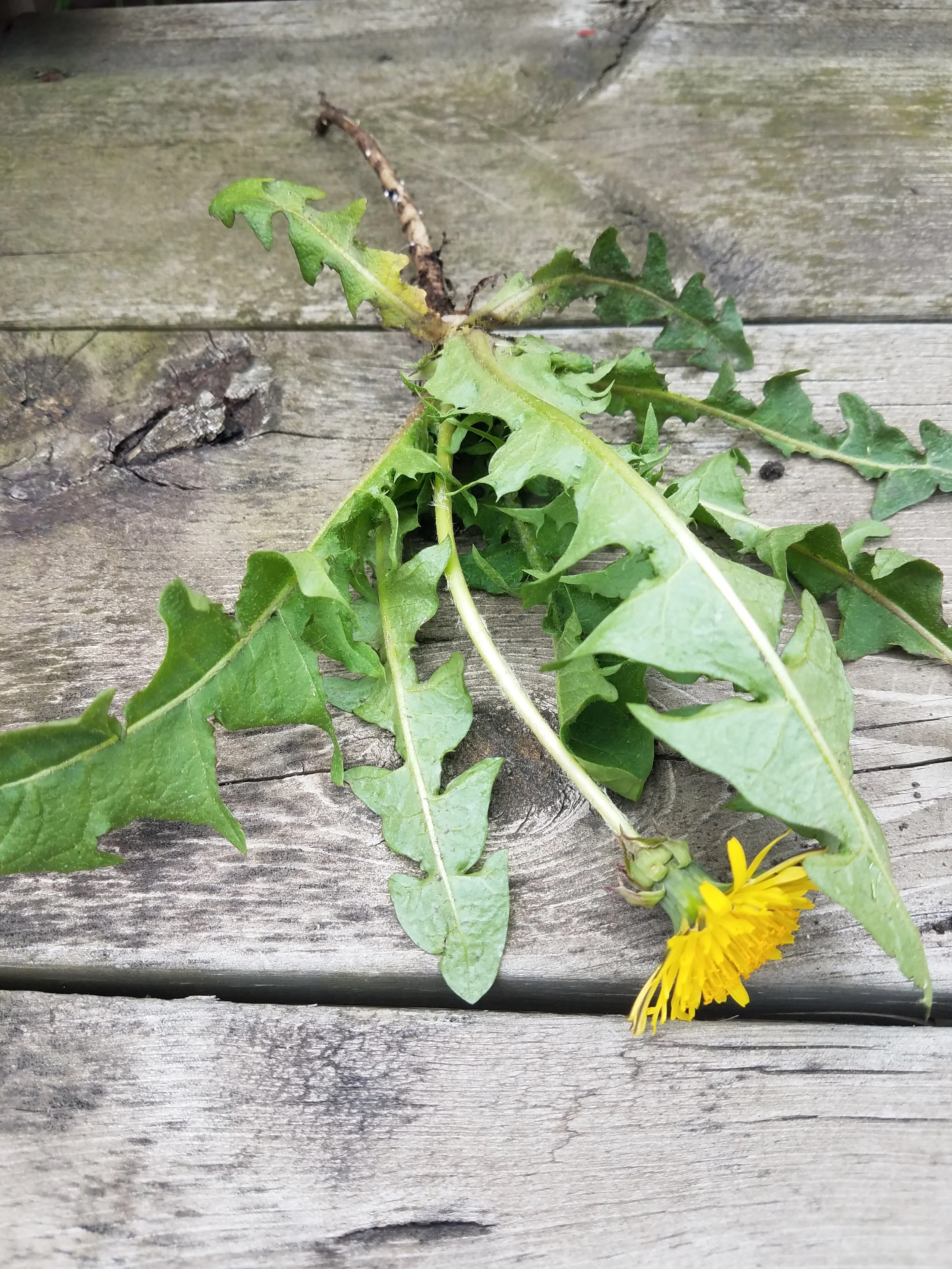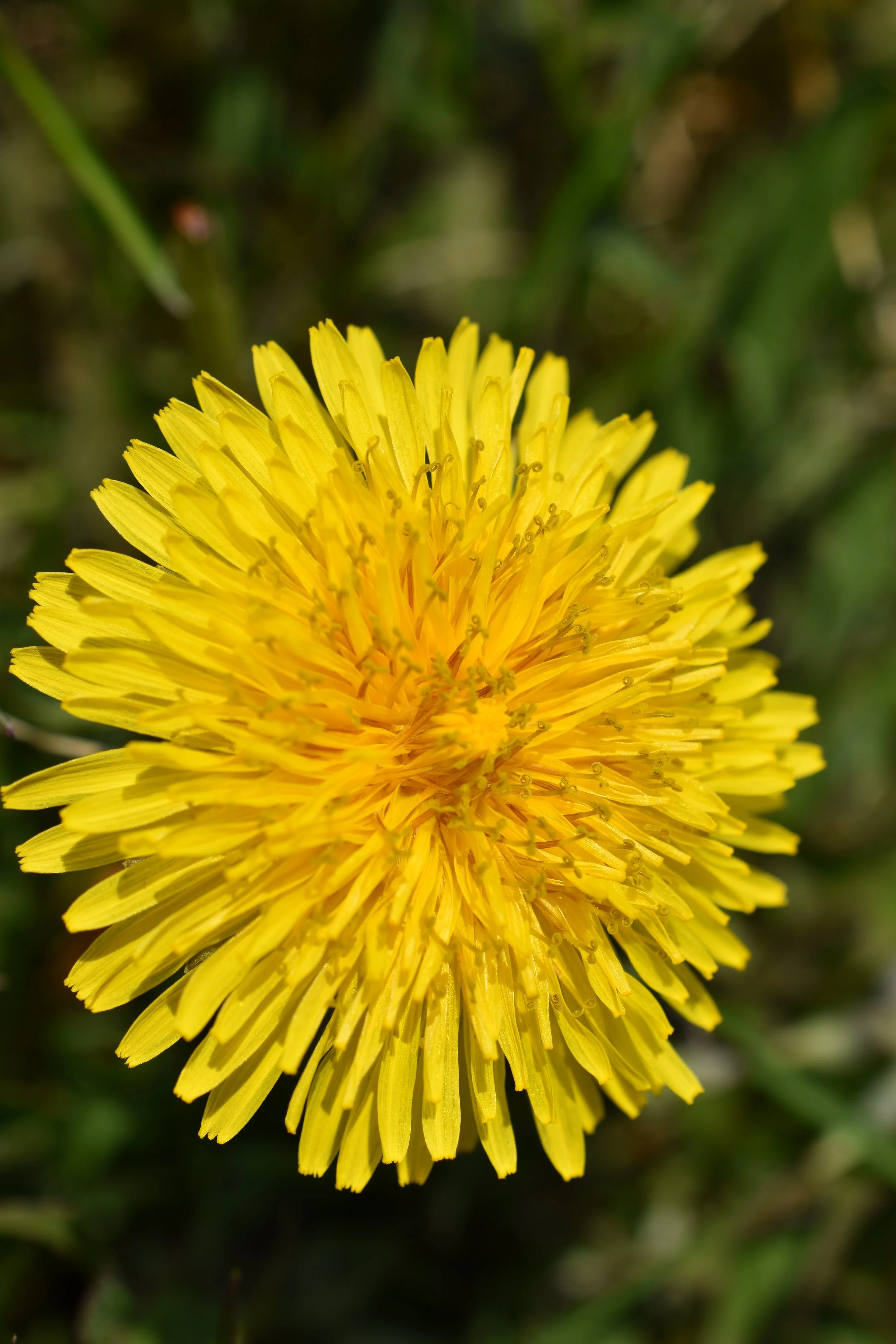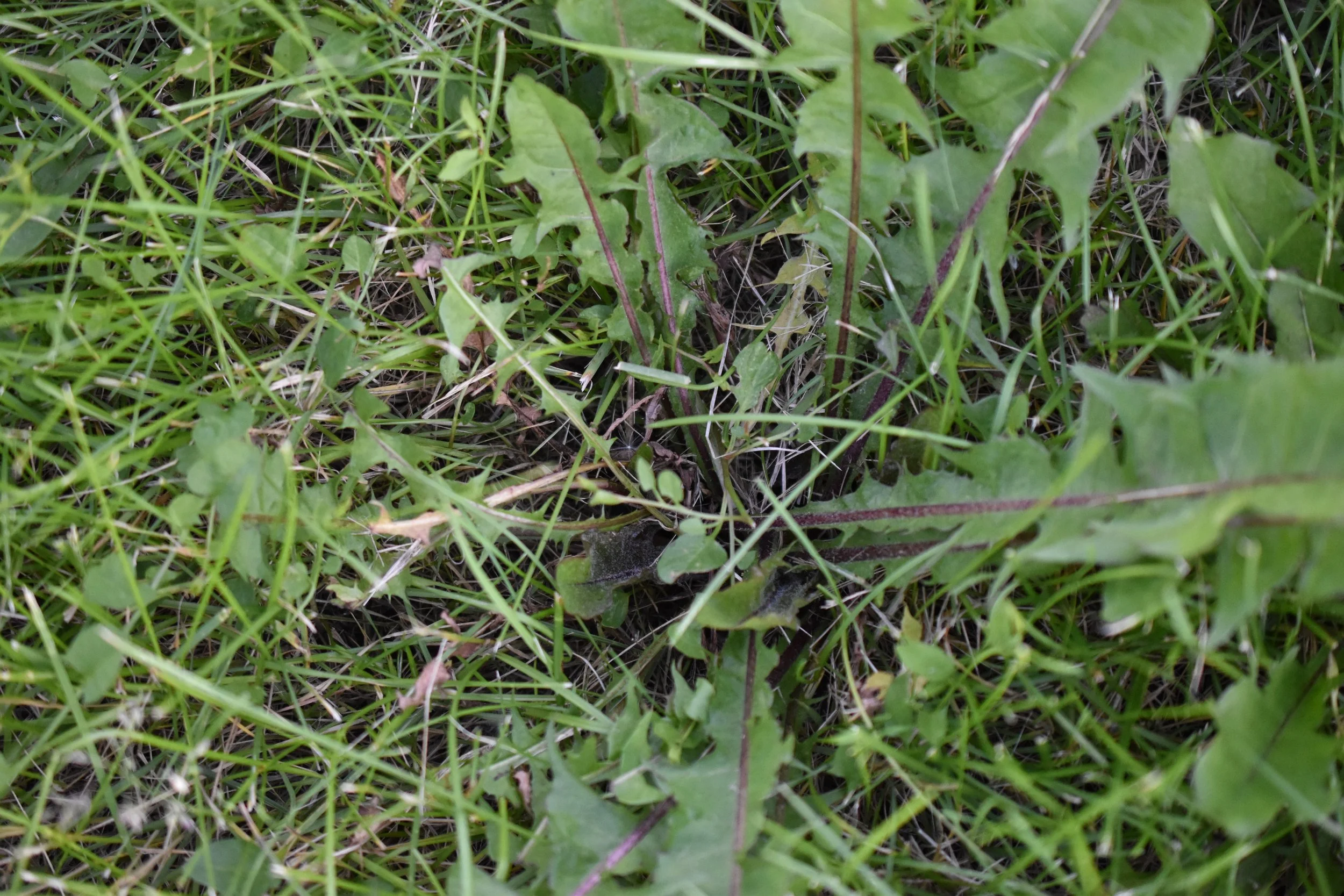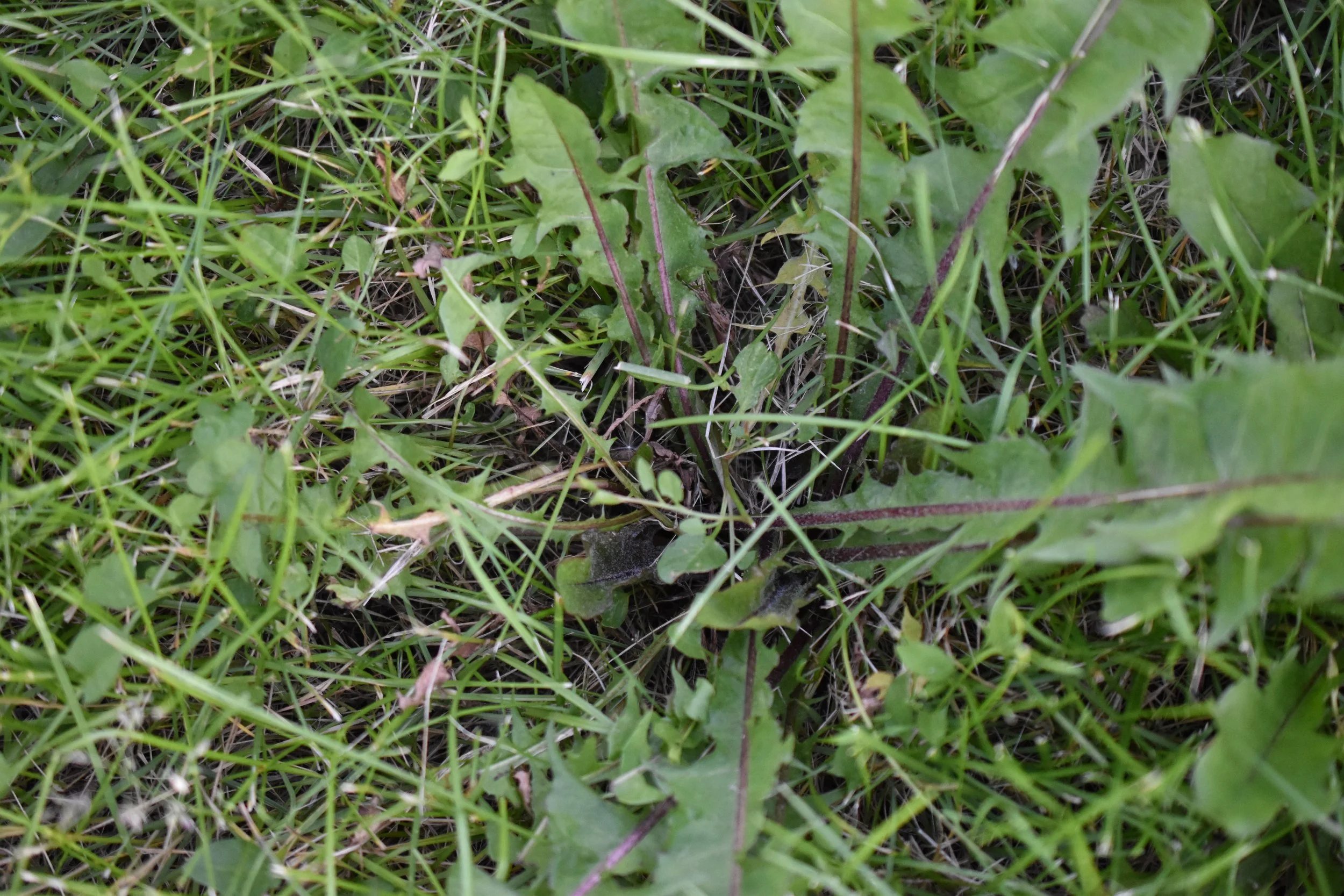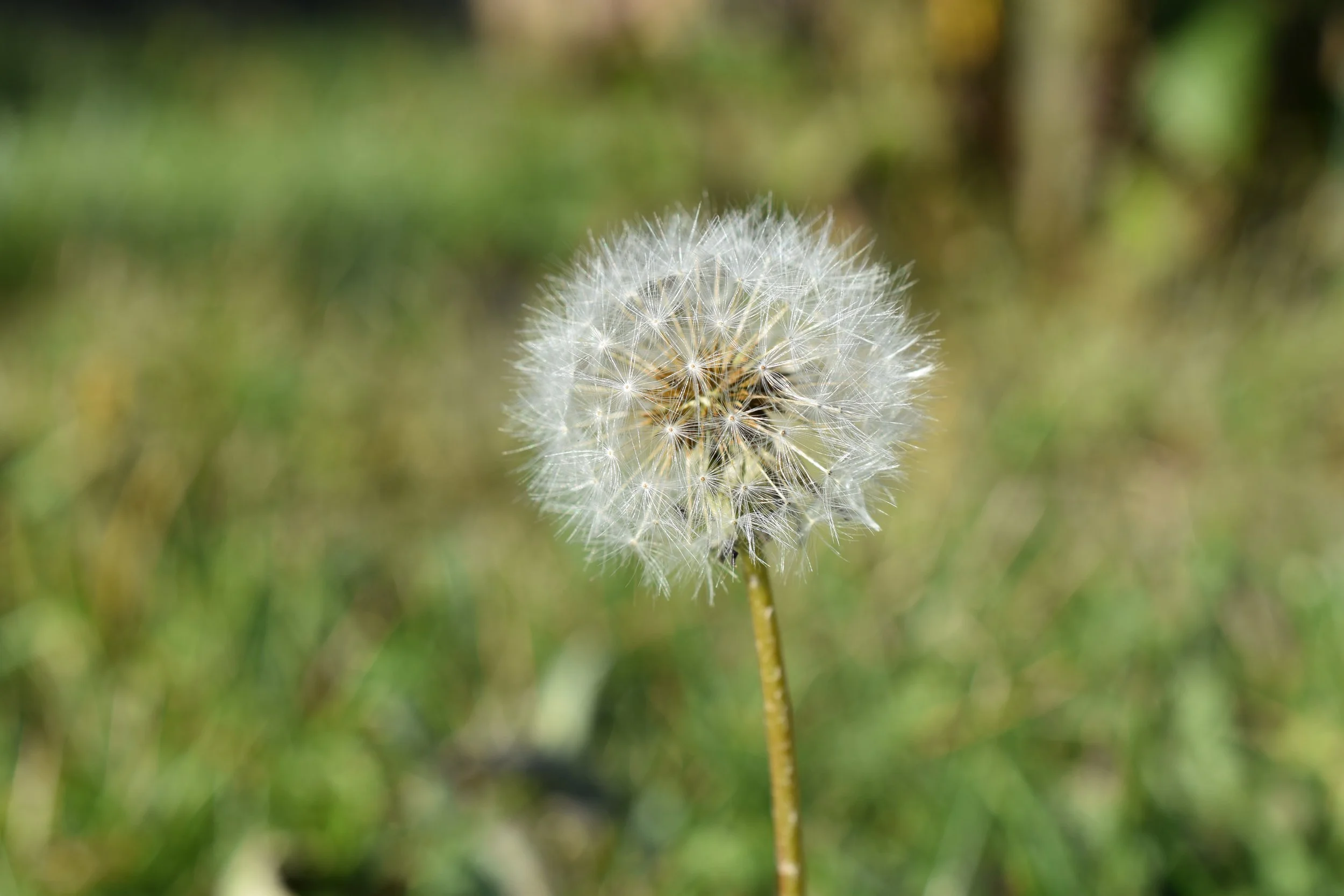Dandelion
Taraxacum officinale
Plant Family: Asteraceae
Other common names: Lion’s Tooth, Blowball
*native/non-native is specific to the Great Lakes Region of the United States
Dandelion is sometimes a symbol for resistance; he has been the poster plant for environmental activism in recent years — displayed on lawn signs that say things like “these weeds are food and medicine,” or “pardon the weeds, I’m feeding the bees.” When someone decides to fight against the rhetoric for perfectly manicured lawns, dandelions are usually the first plants to pop up in their untreated yards, as if standing up in solidarity and support with their bright presence.
The way that dandelion supports the foundation for a healthier ecosystem within our urban and suburban neighborhoods mirrors the way that he serves as the foundation for holistic wellness. As a food, a medicine, and a joyful view after a long Winter, dandelion can bring wholeness to folks’ health goals. He is generous with his wisdom and abundance! And, in return, we can offer him protection from herbicides and ensure that he has the chance to keep feeding our bees.
Medicinal Virtues & Edible Parts
Energetics — cooling, stimulating, drying
Flavors — bitter, slightly sweet
Organ/System Affinities — lymph, skin
Energetics — cooling, stimulating
Flavors — earthy, bitter
Organ/System Affinities — digestive, urinary
The flower head is comprised of hundreds of florets in a composite florescence. Single flower per stem.
The bracts underneath the flower head are pointed outward/downward.
FLOWERS
Ally for — hunger (can be made into cookies, fritters, added to salads, capers made from the young flower buds, etc.); skin issues; sore muscles; moving the lymph
Actions — nutritive, inflammatory modulator, lymphagogue
LEAVES
Energetics — cooling, stimulating, slightly drying
Flavors — bitter
Organ/System Affinities — digestive, urinary, liver
Actions — nutritive, diuretic, carminative
Ally for — hunger (add to salads; use like spinach); kidney infection; edema; mastitis; liver health; pets
ROOTS
Actions — nutritive, diuretic, liver health, prebiotic
Ally for — edema; healthy gut; hangovers; pets
Key Identifying Factors
Dandelion is easily identified by most people, as long as there aren’t any lookalikes nearby. There are a few other yellow flowers around that also have many petals (coltsfoot, sow thistle, and prickly lettuce) and, sometimes, basal leaves like dandelion does (chicory), but there are no known toxic lookalikes. Dandelions will grow almost anywhere except in deep, full shade — resilient and resistant!
The roots are taproots and ooze a sticky, milky white latex.
Basal leaves grow from the ground in a rosette and often have a red/purple spine (but not always). The leaves have deeply lobed margins, and the exact shape can vary greatly from plant to plant, season to season.
Seeds form a fluffy ball hoisted on a hollow stem, which also contain the milky latex.
Toxic Lookalikes
Although there are no known toxic lookalikes, proper identification is still necessary to ensure that the intended medicine is being administered/food is being consumed.
Compare dandelion to coltsfoot, prickly lettuce, and sow thistle — to name only a few. Pay attention to the differences in flower heads, leaf structure, and seed heads.
When and How to Harvest
Dandelion flowers can be plucked by hand or scissors in Spring and Autumn. If you pluck them by hand, you may want to wear gloves to avoid getting sticky fingers from the milky latex (but it’s a harmless fluid for most people). The best ones to pick are fully open and free from debris or insects (it’s not easy to wash these flowers). The leaves can be harvested during the entire growing season; although, the older they get, with flowers and seeds forming, the more bitter and tough they get. That’s not always a bad thing! Depending on what your intentions are, more bitterness might be beneficial. Harvest the roots throughout the entire growing season. Be sure to dig far enough down and around the root to where you won’t accidentally break the taproot while tugging it out of the soil.
Precautions
All parts are generally regarded as safe (GRAS), but folks who are allergic to plants in the Asteraceae family should use with caution.
Other Resources
Because the limited information above came from personal experience of one person, it is highly recommended that you continue learning from other trusted sources. Here are a few places to start!
The Earthwise Herbal: A Complete Guide to Old World Medicinal Plants by Matthew Wood
A Handbook of Native American Herbs: The pocket guide to 125 medicinal plants and their uses by Alma R. Hutchens
Midwest Foraging: 115 wild and flavorful edibles from burdock to wild peach by Lisa M. Rose
Midwest Medicinal Plants: Identify, Harvest, and Use 109 Wild Herbs for Health and Wellness by Lisa M. Rose
American Indian Healing Arts: Herbs, Rituals, and Remedies for Every Season of Life by E. Barrie Kavasch and Karen Baar
Magic and Medicine of Plants by Reader’s Digest
American Herbal Products Association’s Botanical Safety Handbook
The Modern Herbal Dispensatory: A Medicine-making Guide by Thomas Easley and Steven Horne
Wild Remedies: How to Forage Healing Foods and Craft Your Own Herbal Medicine by Rosalee de la Foret and Emily Han
Rosemary Gladstar’s Medicinal Herbs: A Beginner’s Guide by Rosemary Gladstar
Growing & Using the Healing Herbs by Gaea and Shandor Weiss
The Rodale Herb Book: How to Use, Grow, and Buy Nature’s Miracle Plants by Organic Gardening and Farming
Herbs for Pets: The natural way to enhance your pet’s life by Gregory L. Tilford and Mary L. Wulff
Books
Websites & Videos
These statements and claims have not been evaluated by the Food and Drug Administration.
This information is not intended to diagnose, treat, cure, or prevent any disease. For educational purposes only.
